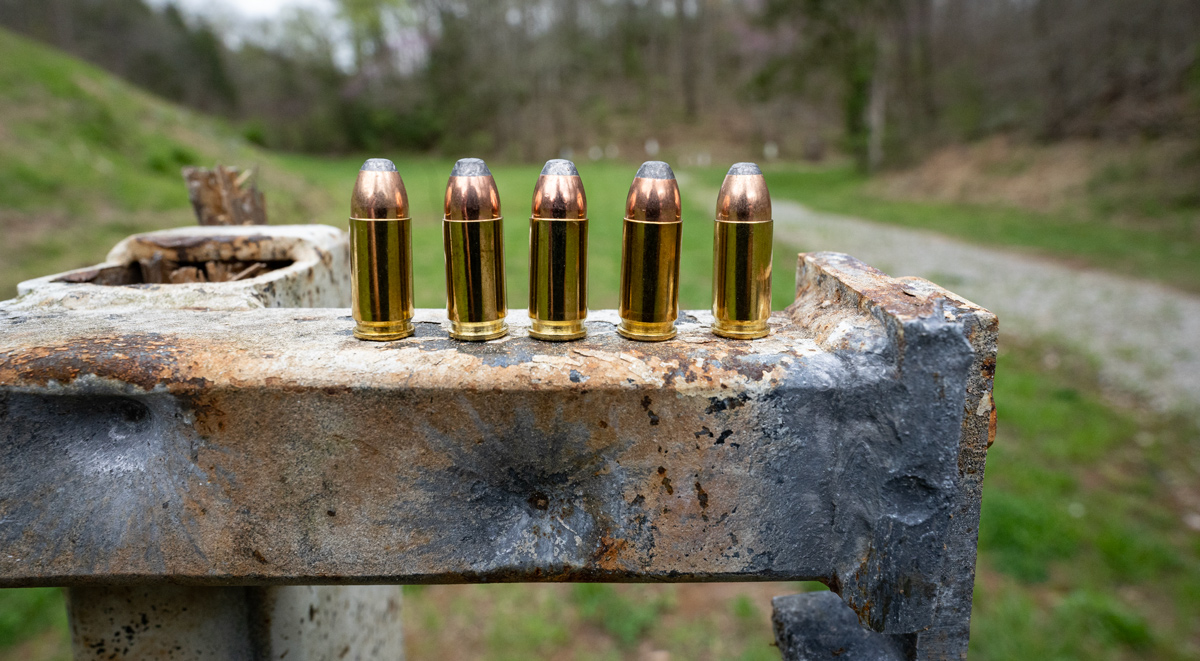A look at the origins of the 9mm Parabellum name and what we mean when we say “parabellum.”
9mm Luger, also known as the “9mm Parabellum,” is the most popular handgun cartridge in the world. Many figures are tossed around, but our sales data shows 9mm makes up more than 10% of the small-arms market, a group that includes the .223 Remington, the .357 Magnum, and the .380 ACP, as well as 20-, 12-, and 10-gauge shotguns.
But how did the 9mm cartridge become a staple in global sidearms? How did it become one of the most important rounds for conceal-carry and home defense, as well as a go-to round for military and law enforcement?
To find out, we need to go back to the 19th century and meet a small-arms designer with a background in business, manufacturing, and military leadership.
The Meaning of “9mm Parabellum?”
“Parabellum” is a Latin word and when you attach it to a cartridge with Austro-German roots, it may seem misplaced. However, there is a reason why it has taken this name.
Georg Luger developed the 9mm Luger cartridge. Luger worked for the German weapons manufacturer Deutsche Waffen- und Munitionsfabriken, commonly known as DWM. The motto for DWM was “si vis pacem, para bellum,” a Latin phrase that means “if you want peace, prepare for war.”
DWM placed the term “parabellum” on a variety of cartridges, including the 9mm’s parent case, the 7.65x21mm Parabellum.
Today, most American manufacturers call their 9mm cartridge “9mm Luger.” The Sporting Arms and Ammunition Manufacturers’ Institute (SAAMI) officially designated the round as the “9mm Luger.” So, “Luger” is the name manufacturers typically print on boxes of ammunition. The same name is officially used by the equivalent European organization.
A Brief History of the 9mm Luger

The 9mm Luger is largely credited to Georg Luger, the legendary firearms and ammunition designer. Born in Austria in 1849, Luger came from a prominent family and studied business as a young man. He eventually joined the military and became an excellent marksman. With this foundation in firearms, he would go into firearms design after his service.
The round we now call the 9mm Luger was derived from an earlier round created by Georg Luger: the 7.65x21mm. The new version shortened the length but widened the diameter, resulting in a cartridge with rough measurements of 9mm by 19mm. The 9mm Luger was born and officially released in 1901.
The round was designed alongside the P08 Luger, the first pistol to shoot 9mm Luger ammunition. The P08 and 9mm Luger were developed for military and police under a variety of requirements. One of the requirements was that the cartridge be deadly at 50 meters, roughly 164 feet or 54 yards.
The round was released in 1901 and presented to numerous countries, including the U.S. and Great Britain. The German navy adopted the round in the early 20th century.
Numerous firearms helped propel the 9mm Luger forward, but one of the most impactful was the MP18 submachine gun, which rose to prominence during World War I. The MP18 was a German invention, created to break the stalemate during the First World War. An effective weapon for the time, it was able to fire roughly 500 rounds in a minute and brought more exposure to the 9mm cartridge. Military leaders on both sides took notice.
The 9mm Luger and its firearms changed very little between the two World Wars. However, European and American countries started experimenting the variations of the round and the firearms.
Browning’s Pistols

John Moses Browning, the famous American designer, was working with a Belgian company that created the Browning Hi-Power, which drastically changed the world of autoloading pistols. With an appearance similar to a 1911, the Hi-Power held 13 rounds, nearly double the amount held by existing firearms. This was another firearm that further propelled the 9mm Luger into global prominence.
By the end of the 1950s, all NATO countries except the U.S. had officially adopted the 9mm as their official sidearm cartridge. A variety of NATO submachine guns fired the round as well.
Americans did little with the cartridge until the U.S. military decided to replace the 1911 handgun and .45 ACP cartridge with a more modern sidearm. Among stiff competition, the military awarded the contract to Barretta, who used a 9mm pistol called the M9. The U.S. military adopted the firearm in the 1980s, triggering an adoption by police forces across the country.
Once law enforcement started using the 9mm for duty sidearms, the U.S. population took notice. More than 80 years after the 9mm Luger was created, American firearms users realized that with greater capacity, ease of handling, and effective ballistics within 50 yards, the round could be an extremely useful tool.
Once Glock hit the market with their simple, compact 9mm pistols, everything changed. The round became the standard for concealed carry and personal protection; since the 1990’s the 9mm Luger has dominated the pistol industry.
What’s in a Name: The 9mm Luger, 9mm Parabellum, or 9x19mm
It’s all the Same
The 9mm Luger, 9mm Parabellum, and 9x19mm are all the same. These are simply different names to describe the same round. Some people call it the Luger; many simply call it the “nine.” Regardless, these all refer to the same round. We go into greater detail about the many names of 9mm ammo here.
No matter what you call it, if you are looking for affordable 9mm ammunition, visit AmmoToGo.com. Whether you need training ammo or expanding rounds for personal protection, we have the cartridges you need at a price you can afford!


